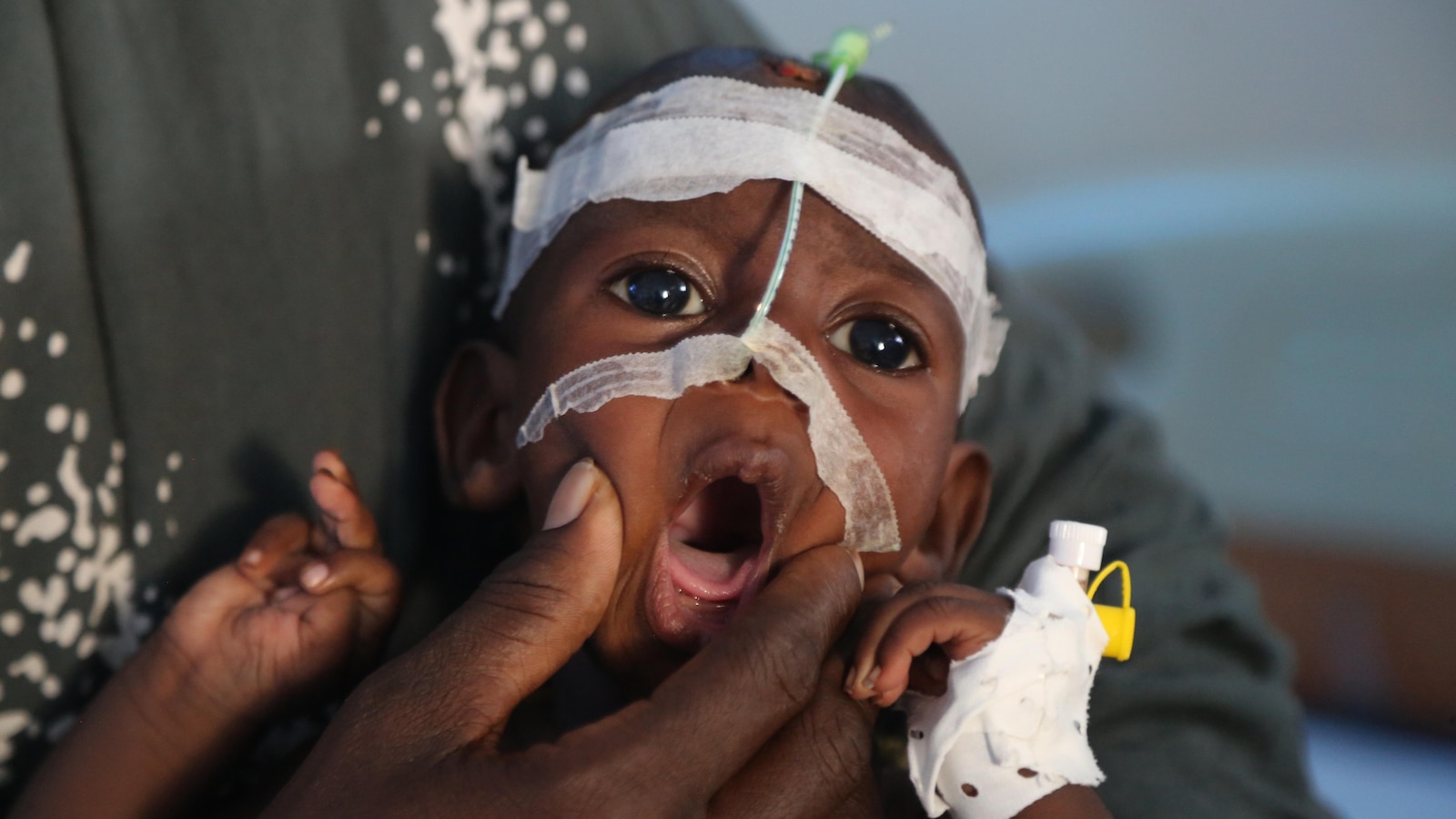Hidradenitis Suppurativa Disparities: Neighborhoods Matter – MedPage Today

Report on the Association Between Neighborhood-Level Socioeconomic Status and Hidradenitis Suppurativa
Introduction: Aligning Health Outcomes with Sustainable Development Goals
Hidradenitis suppurativa (HS) is a chronic inflammatory dermatological disease that presents a significant challenge to achieving Sustainable Development Goal 3 (Good Health and Well-being). The condition disproportionately affects Black and Hispanic individuals, highlighting critical health disparities that contravene the core principles of SDG 10 (Reduced Inequalities). Previous research indicates a bidirectional relationship between HS and low socioeconomic status (SES), alongside established risk factors such as smoking and obesity. This report details the findings of a cross-sectional study investigating the association between neighborhood-level socioeconomic status (nSES) and new diagnoses of HS, framing the results within the context of the SDGs.
Study Methodology and Design
Research Objectives
A cross-sectional study was conducted by researchers at the University of California to evaluate the association between nSES and the diagnosis of HS in a dermatology clinic population. The study, which included patients from August 2019 to May 2024, hypothesized that individuals residing in neighborhoods with lower SES would have greater odds of receiving a new HS diagnosis. This investigation is crucial for understanding the environmental and social determinants of health, a key component of SDG 11 (Sustainable Cities and Communities).
Data Collection and Analysis
The primary outcome was a new diagnosis of HS, identified using the ICD-10 code L73.2 and confirmed by manual record review. Patients without HS from the same clinic population formed the control group. The study accounted for several variables:
- Confounders: Age, sex, and race/ethnicity were adjusted for, recognizing their historical impact on neighborhood characteristics and lending practices, which directly relates to systemic inequalities targeted by SDG 10.
- Mediators:
- Health insurance type (Private/Medicare vs. Medicaid)
- Smoking status (ever vs. never)
- Obesity (Body Mass Index [BMI] ≥ 30)
- Socioeconomic Measurement: Neighborhoods were categorized into five quintiles (Q1 to Q5), with Q1 representing the lowest nSES and Q5 the highest.
Key Findings and Implications for SDG 10 (Reduced Inequalities)
Demographic Profile of the Study Cohort
The study analyzed a cohort of 65,766 patients with the following characteristics:
- Mean age: 50.4 years
- Female: 41.8%
- Race/Ethnicity:
- White: 56.5%
- Asian, Native Hawaiian, or other Pacific Islander: 15.7%
- Hispanic: 7.5%
- Black: 3.8%
- Multiracial: 2.2%
- Other: 5.5%
- Unknown: 8.8%
Disparities in Hidradenitis Suppurativa Diagnosis
Of the total cohort, 485 patients (0.7%) received a new HS diagnosis. This group exhibited significant demographic differences compared to the control group, underscoring a failure to meet the equity targets of SDG 10:
- Age: Younger (mean age 35.6 vs. 50.5 years)
- Sex: Predominantly female (75.5% vs. 59.3%)
- Race/Ethnicity: Higher proportions of Black (19.2% vs. 3.7%) and Hispanic (17.3% vs. 7.4%) individuals.
- Socioeconomic Status: A significantly larger percentage lived in the lowest nSES quintile (24.3% vs. 7.7%).
- Obesity: Higher prevalence of obesity (23.8% vs. 14.3%).
Socioeconomic Status as a Primary Determinant
The primary analysis revealed a direct and significant correlation between lower nSES and higher odds of an HS diagnosis. After adjusting for age, sex, and race/ethnicity, the odds of diagnosis decreased with each increasing nSES quintile. Patients residing in the lowest-nSES neighborhoods (Q1) had more than three times the odds of a new HS diagnosis compared to those in the highest-nSES neighborhoods (Q5). This finding directly links the health burdens of HS to poverty and inequality, highlighting obstacles to achieving SDG 1 (No Poverty) and SDG 10.
Mediating Factors and Their Connection to SDG 3 and SDG 11
The Role of Obesity
A secondary analysis demonstrated that obesity partially mediated the total effect of nSES on an HS diagnosis. This connection between a modifiable health risk factor and socioeconomic environment emphasizes the importance of public health interventions aimed at promoting well-being (SDG 3). It also suggests that neighborhood characteristics, such as access to healthy food and recreational spaces, are critical factors influencing health outcomes, a central theme of SDG 11 (Sustainable Cities and Communities).
Conclusions and Future Directions for Sustainable Development
Summary of Findings
This study concludes that neighborhood-level socioeconomic status is an independent factor associated with a new diagnosis of Hidradenitis Suppurativa. The findings illustrate that where a person lives significantly impacts their health, reinforcing the need to address social determinants of health to make progress on the Sustainable Development Goals.
Study Limitations
- The findings may not be generalizable beyond the San Francisco Bay Area.
- Potential for selection bias due to the largely insured study population.
- Incomplete BMI data may have led to an overestimation of its effect.
- The cross-sectional design limits causal inference.
- Use of ICD-10 codes may have resulted in underdiagnosis.
- Neighborhood SES was measured only at a single point in time.
Recommendations for Future Research
To advance the objectives of the SDGs, future research must identify specific, modifiable social and environmental factors within neighborhoods that influence HS risk. Studies should be expanded to other geographic regions and health systems to validate these findings. Identifying these factors is the first step toward designing targeted interventions that can reduce health inequalities (SDG 10) and promote well-being for all (SDG 3).
Analysis of Sustainable Development Goals in the Article
1. Which SDGs are addressed or connected to the issues highlighted in the article?
- SDG 3: Good Health and Well-being: The article’s central theme is a chronic inflammatory skin disease, Hidradenitis Suppurativa. It discusses the prevalence of this non-communicable disease and its associated risk factors like obesity and smoking, directly aligning with the goal of ensuring healthy lives.
- SDG 10: Reduced Inequalities: The study explicitly finds that the disease disproportionately affects individuals based on race (Black and Hispanic) and socioeconomic status (low nSES). This highlights significant inequalities in health outcomes within a population, which is a core concern of SDG 10. The article also points to historical discriminatory practices as a root cause of neighborhood-level inequality.
- SDG 11: Sustainable Cities and Communities: The research focuses on neighborhood-level socioeconomic status (nSES) and how the “neighborhood environment” influences health risk factors like smoking and obesity. The call for future research into “social or environmental exposures in neighborhoods” connects the health issue to the quality and characteristics of human settlements.
2. What specific targets under those SDGs can be identified based on the article’s content?
- Target 3.4: By 2030, reduce by one-third premature mortality from non-communicable diseases through prevention and treatment and promote mental health and well-being. The article addresses this target by investigating a chronic non-communicable disease (Hidradenitis Suppurativa) and its modifiable risk factors (obesity, smoking), which is fundamental to prevention and treatment strategies.
- Target 10.2: By 2030, empower and promote the social, economic and political inclusion of all, irrespective of age, sex, disability, race, colour, ethnicity, origin, religion or economic or other status. The study’s findings directly relate to this target by demonstrating a lack of equal health outcomes for people of different races (Black, Hispanic) and economic status (those living in low-SES neighborhoods).
- Target 10.3: Ensure equal opportunity and reduce inequalities of outcome, including by eliminating discriminatory laws, policies and practices. The article supports this by mentioning that historical “discriminatory mortgage and other lending practices” have contributed to the neighborhood-level inequalities that are now linked to disparate health outcomes.
3. Are there any indicators mentioned or implied in the article that can be used to measure progress towards the identified targets?
- Prevalence of non-communicable diseases: The study’s primary outcome was the rate of new diagnoses of Hidradenitis Suppurativa (0.7% of the patient population). This serves as a direct indicator for tracking the burden of this specific NCD.
- Health outcomes disaggregated by socioeconomic status: The study uses neighborhood-level SES (nSES) quintiles to measure health disparities. The finding that patients in the lowest quintile had “more than 3 times the odds of a new diagnosis” is a clear indicator of inequality.
- Health outcomes disaggregated by race and ethnicity: The article provides specific data showing the disproportionate impact on certain groups. For example, Black individuals made up 19.2% of cases but only 3.8% of the total patient population, serving as an indicator of racial health disparities.
- Prevalence of health risk factors: The study measures obesity (BMI ≥ 30) and smoking status. The higher prevalence of obesity among patients with the disease (23.8% vs 14.3%) is an indicator used to understand and mediate the disease’s link to SES.
Table of SDGs, Targets, and Indicators
| SDGs | Targets | Indicators |
|---|---|---|
| SDG 3: Good Health and Well-being | 3.4: Reduce premature mortality from non-communicable diseases (NCDs) through prevention and treatment. |
|
| SDG 10: Reduced Inequalities |
10.2: Promote the inclusion of all, irrespective of race, ethnicity, or economic status.
10.3: Ensure equal opportunity and reduce inequalities of outcome. |
|
| SDG 11: Sustainable Cities and Communities | (Implied) Targets related to improving the quality of life and health in human settlements. |
|
Source: medpagetoday.com

What is Your Reaction?
 Like
0
Like
0
 Dislike
0
Dislike
0
 Love
0
Love
0
 Funny
0
Funny
0
 Angry
0
Angry
0
 Sad
0
Sad
0
 Wow
0
Wow
0

















































:focal(1500,1000)/https://media.globalcitizen.org/a6/9a/a69a4720-d8a1-4715-b596-18738d03c05c/rotary_polio_hero_image.jpg?#)






/countries/sri-lanka/photo-credit---dmc-sri-lanka.tmb-1200v.jpg?sfvrsn=dc298bcc_1#)


















